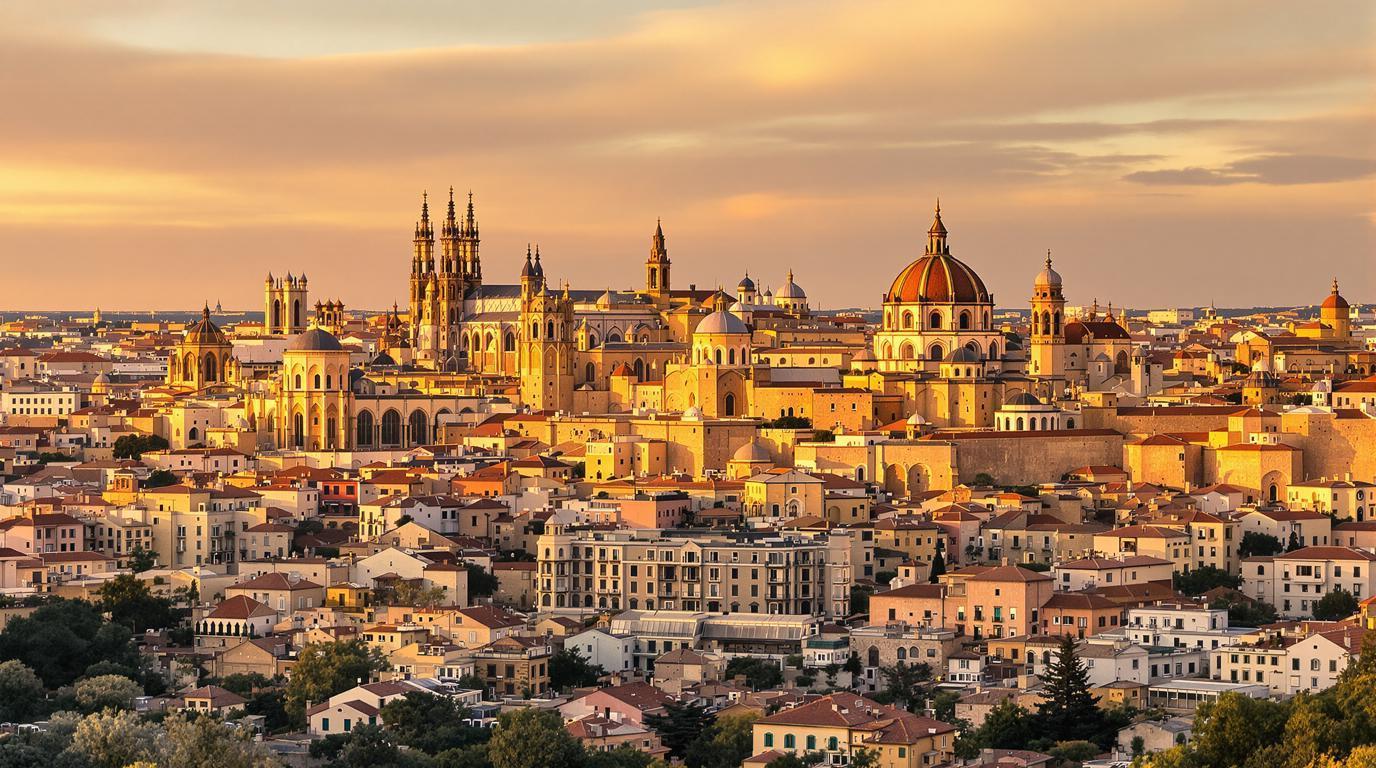Toledo’s golden silhouette rises dramatically above the Tagus River, a medieval masterpiece where Islamic horseshoe arches stand alongside Gothic cathedrals and Jewish synagogues. Known as the “City of Three Cultures,” this ancient Spanish capital presents one of Europe’s most perfectly preserved testimonies to religious coexistence that shaped Western civilization.
A living museum where three worlds converged
For centuries, Toledo served as an extraordinary crossroads where Christians, Muslims, and Jews lived in a cultural harmony rarely seen in medieval Europe. This unique heritage earned Toledo its UNESCO World Heritage status in 1986, preserving what many historians consider the most important multicultural experiment of medieval Spain.
“Toledo represents the essence of Spain’s complex identity,” explains local historian Miguel Sánchez. “Every cobblestone tells the story of how these three civilizations created something greater than themselves – a city that became the intellectual center of Europe.”
The golden cathedral that took 267 years to complete
Toledo Cathedral stands as the city’s undisputed crown jewel – a massive Gothic structure begun in 1226 that wasn’t completed until 1493. Its sacristy houses one of Spain’s most impressive art collections, featuring masterpieces by El Greco, Goya, and Velázquez that most visitors rush past, focused only on the main altar.
The cathedral’s Monstrance, a 10-foot-tall silver and gold tower created to hold the Eucharist, contains nearly 400 pounds of precious metals and 30 years of craftsmanship – an awe-inspiring testament to Toledo’s medieval wealth and religious devotion.
The enigmatic mosque that became a church
The Mosque of Cristo de la Luz offers perhaps the most fascinating architectural fusion in Toledo. Built in 999 CE as an Islamic prayer hall, it features quintessential Moorish elements like horseshoe arches and intricate geometric patterns. Yet after the Christian reconquest, rather than demolishing this Muslim sanctuary, the new rulers simply added an apse and converted it to Christian worship.
This remarkable preservation decision mirrors similar religious architectural transitions found throughout medieval Mediterranean territories, where sacred spaces often evolved rather than disappeared.
The synagogues that survived centuries of persecution
Toledo’s Santa María la Blanca Synagogue presents an architectural paradox – a Jewish temple built by Islamic architects for Jewish worshippers in a Christian kingdom. Its white horseshoe arches and minimal decoration create an atmosphere of serene simplicity that has survived since the 12th century despite periods of intense religious persecution.
“What makes Toledo unique is that we don’t just have empty monuments – we have living traditions continuing from all three cultures,” says Rabbi David Halpern, who leads cultural tours through Toledo’s Jewish Quarter.
The astonishing view that inspired El Greco
No visit to Toledo is complete without experiencing the panoramic vista from Mirador del Valle, where the entire city unfolds dramatically across the river gorge. This breathtaking landscape inspired El Greco’s famous painting “View of Toledo,” capturing the mystical quality of light that still bathes the city at sunset, much like other natural wonders that have inspired artistic masterpieces throughout history.
The hidden world beneath the streets
Toledo’s underground network of caves, cisterns, and passageways offers a glimpse into the city’s ancient foundations. The Roman caves beneath the city center once served as water storage systems and possibly secret meeting places during times of religious persecution.
These subterranean spaces mirror similar hidden historical layers found beneath many ancient European cities, where centuries of civilization have literally built upon one another.
The sword makers who forged legends
Toledo steel gained worldwide fame during the medieval period for producing the finest sword blades in Europe. Today, artisan workshops still forge decorative swords using traditional methods, their rhythmic hammering echoing through narrow streets just as it has for nearly 2,000 years.
Local swordsmith Fernando Rodríguez represents the tenth generation of his family to practice this ancient craft. “Every Toledo blade carries the soul of our city – strong but beautiful, with many layers forged together under intense pressure.”
Like other places where ancient traditions survive alongside modern life, Toledo maintains its cultural identity through these living heritage practices.
Where ancient walls tell timeless stories
As evening falls and tourists retreat to Madrid, Toledo reveals its most authentic character. Local families emerge for paseo (evening walks), tapas bars fill with animated conversation, and the city’s golden stones glow with an inner light that seems to transcend time itself – much like other ancient places where sacred traditions remain hidden from casual visitors.
In Toledo, history isn’t sequestered in museums – it lives in every handcrafted marzipan sweet, every sword blade hammered by generations of artisans, and every prayer echoing through sanctuaries that have welcomed the faithful for centuries, regardless of which god they called upon.
